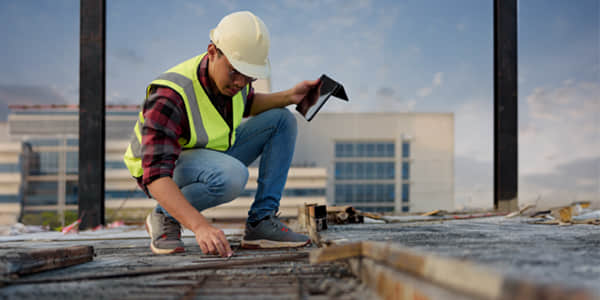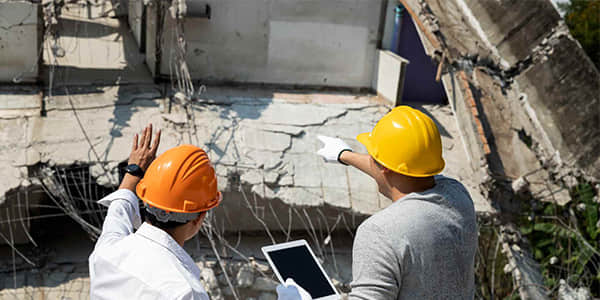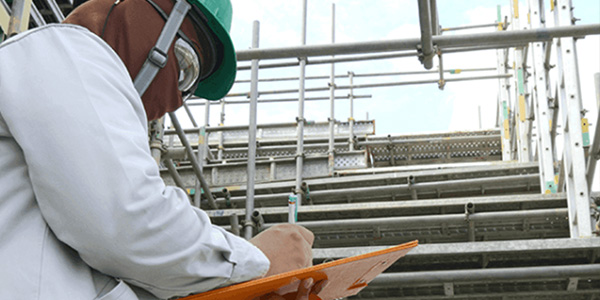Introduction
This manual commonly saves the contractors, engineers, or managers the time, money, and trouble of a subsequent lawsuit. A detailed exploration of what formwork is, why it is of great importance to it, and the ways of doing it will unfold in this guide, such as looking for rust, corrosion, distortion, and wear.
What is Formwork Inspection?
It is the monitoring and investigation of reusable or permanent molds utilized for holding wet cement until it is solidified under control. Such molds are called formwork and are sturdy enough to hold the required shapes with integrity. Different stages of inspection follow each one of the projects. The purpose of these inspections is to ensure that the template complies with design specifications and safety standards during use.
The need of inspection for formwork is as follows:
1. It assures the structural integrity: not giving a proper inspection to the formwork may lead to a structural failure and terrible consequences. Inspections ensure that the concrete can withstand pressure due to wetness along with additional load factors.
2. Congruence with codes: construction activities are ordinarily bound to building regulations-national or international standards.
3. Cost-effectiveness: The sooner you discover project errors and incorrect implementations, the more costs you can save.
4. Safety: Poor work is an origin of accidents, injuries, and death. Regular inspections help identify hazards and eliminate them, making the workplace safer.
Key Aspects of Formwork Inspection

1. Design and Planning:
- The formwork, before the commencement of any construction, shall be designed and revised to adequately check suitably ensuring load-bearing capability, conformity to specified quality standards, and support to architect's drawings.
2. Quality of Materials:
- Poor materials may fail up to a considerable extent; therefore, formwork materials should be tested for defects and meet pre-approved material standards-whether timber, steel, or aluminum.
3. Assembly and Installation:
- Inspections are to be carried out to assess the formwork alignment, bracing, support systems, and how they were constructed.
4.Pouring the Concretes:
- Very close supervision of any movement or failure of the form during the actual pouring must take place. Even though these two should be absolutely confirmed, please also make sure that the concrete spread is indeed well down in confirmation that the form can take the load it must take at that moment.
5.Inspection after Pouring:
- It is very important that the formwork be inspected for damage or deformation as soon as the concrete has set. This becomes a matter of great importance if the formwork is to be re-used at a later date.
Best Practices for Formwork Inspection
1. Regular Inspections
- Continuous inspections shall be done from design all the way through to the pour stage to flag any potential problems ahead of time and ensure compliance with safety requirements by its proper carry-through.
2. Embracing Technology
- Technologies that incorporate drones, 3D scanning, digital checklists, and the like enhance both the accuracy and efficiency of the inspections.
3. Training and Certification
- Qualified training of inspectors need to be emphasized, hence producing quality inspections and encouraging them to be up-to-date with current standards and techniques.
4. Documentation
- Accurate specification of all inspections must keep precise records, including photographs, checklists, and reports. Documentation is the process of recording the state of the formwork and its conformance to the established parameters.
5. Collaboration
- Create a cooperative atmosphere among all stakeholders including the architect, engineer, contractor, and inspector. Such communication keeps everyone on the same page and looking for possible solutions as early as possible.
Common Problems Observed in the Inspection of Formwork

1. Misalignment
- The adequate set-up and raising of the forming surface will be influenced by any misalignment of the erected formwork that might pose a threat to the entire structure.
2. Poor Bracing
- Inadequate bracing may allow the formwork to slide or totally collapse during the concrete pouring.
3. Material Defects
- Certain material defects may reduce the strength of formworks, thereby causing collapse during loaded conditions.
4. Overloading
- Overloading of the forms beyond their loading capacity would put them to a risk of structural failure.
5. Poor Workmanship
- The poor assembly or installation of the formwork leads to a wide range of problems, such as a defect along with no provision for alignment, etc.
Specific Checks During Formwork Inspection

1. Examining for Excessive Rust and Corrosion
- The metal formwork is to be checked for signs of excessive rust and corrosion. These manifestations may weaken the structural integrity of the formwork and lead to failures. Proper cleaning and protective strategies must be employed to alleviate these issues.
2. Distortion and Bending Inspection
- Signs of distortion or bending in the formwork must be looked for. Distortion or bending may, however, be due to poor handling or excessive loading, which can have a very adverse impact on the shape and strength of the final structure.
3. Removal of Concrete Residue
- Remove any concrete residue from formwork that originated from previous usages. Such residues will affect the finish and cause the newly cast concrete to have an uneven surface.
4. Check for Wear and Other Damage
- After Long Storage Inspect the formwork for signs of wear and other damage after long-term storage. Long storage will cause premature wear, which may eventually hamper the operability of your formwork.
5. Get an Assessment for Additional
- Lubrication Consider whether the formwork might require additional lubrication. Properly lubricated formwork shall make the process of removal easy and prevent damage to the concrete surface.
Conclusion
Formwork is the most essential component of a construction project, ensuring the safety, quality, and durability of the structure. If proper techniques and inspections are implemented, it is possible to reduce hazards, compliance, and costs.

FAQS
Why is lubrication important for formwork?
- Lubrication ensures easy removal of formwork and prevents damage to the concrete surface. It also extends the lifespan of reusable formwork systems.
How can I prevent wear and damage from long-term storage?
- Store formwork in a dry, covered area and ensure it is properly supported to prevent warping or cracking. Regular inspections before reuse are also crucial.
More Information
Formwork Pictures, lmages and Stock Photos----iStock
What is the lmportance of Formwork in the Concrete----Linkedln


